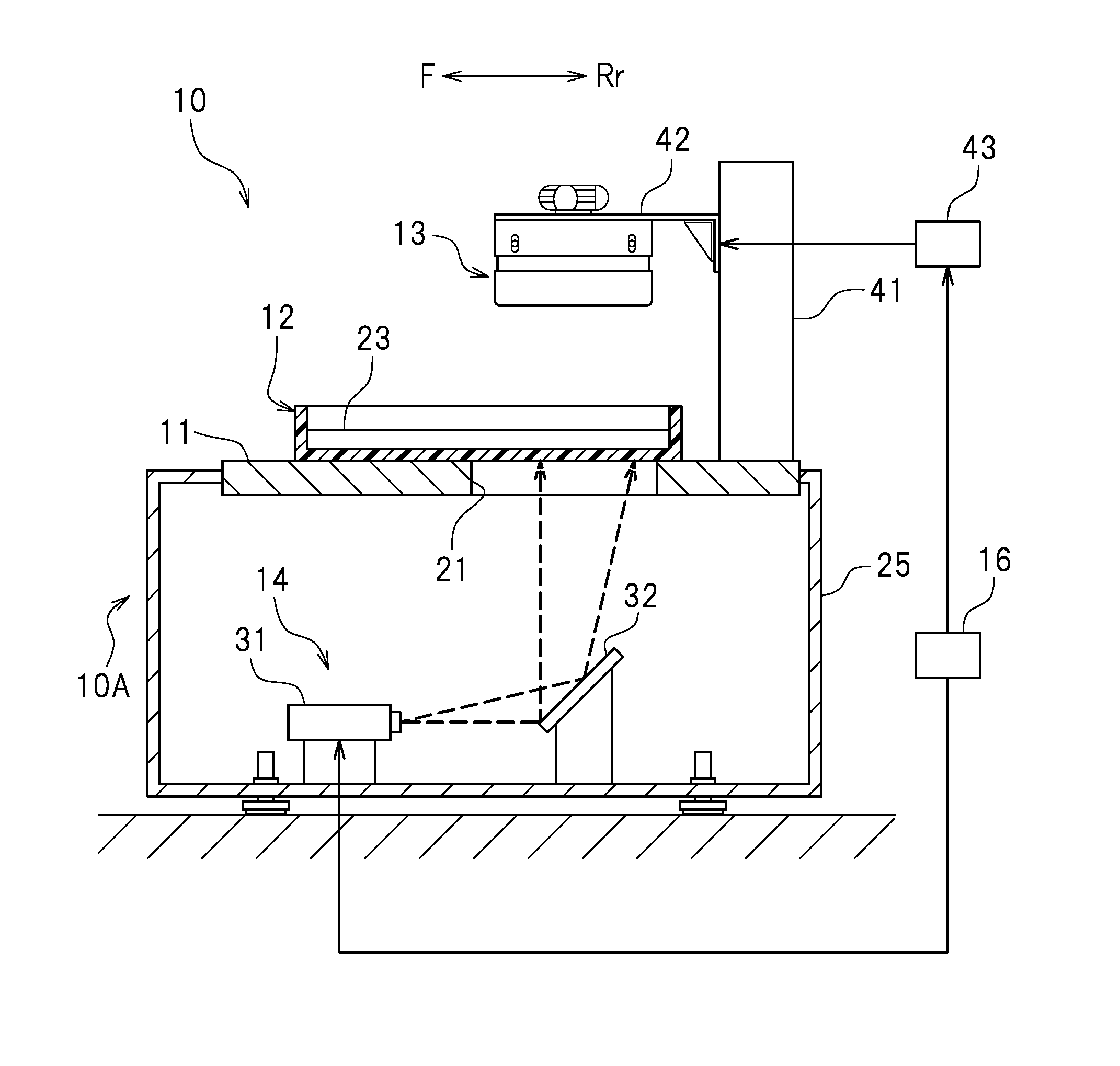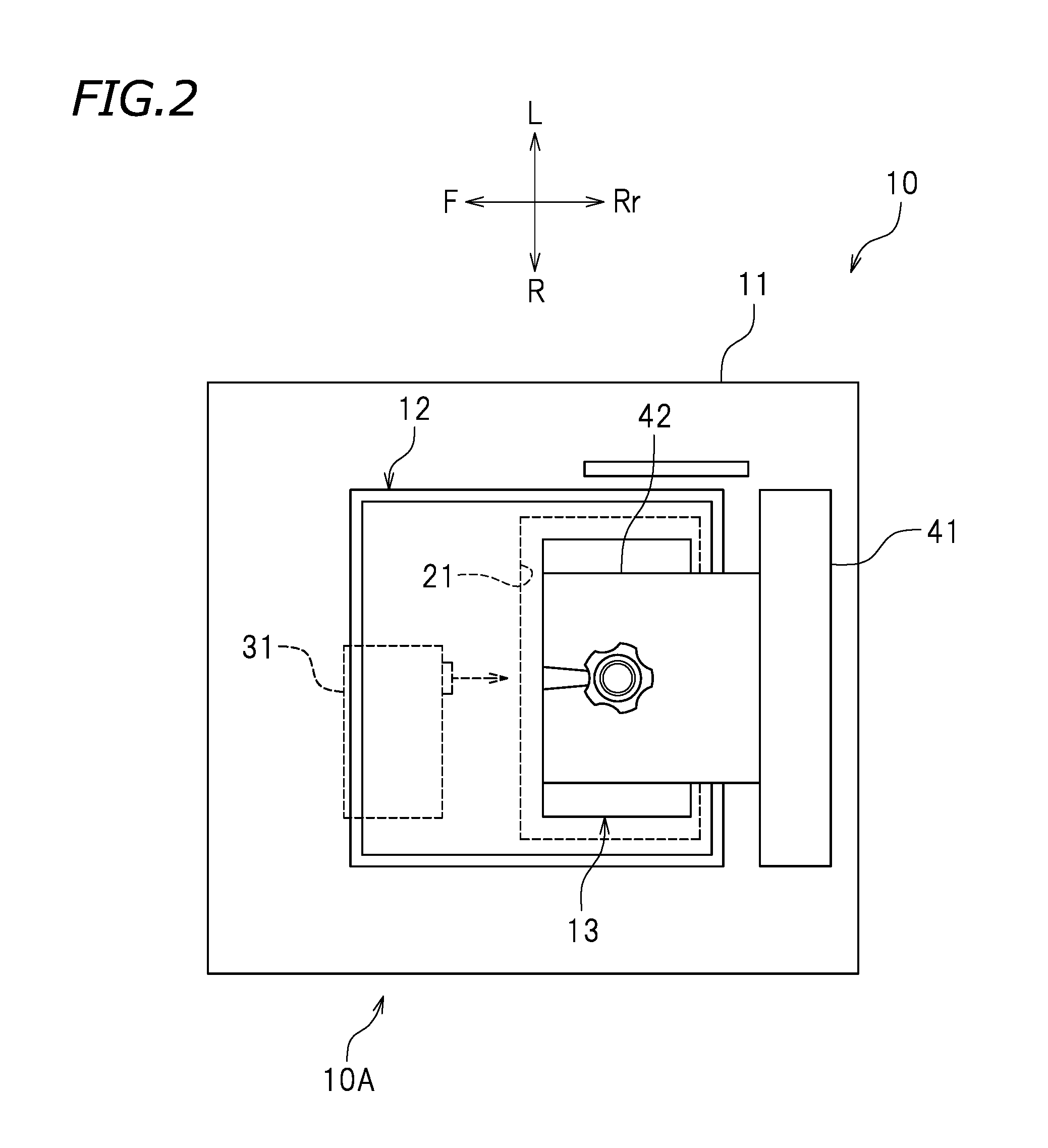SUPPORT ARRANGEMENT DETERMINING APPARATUS, THREE-DIMENSIONAL PRINTING SYSTEM, AND METHOD of DETERMINING SUPPORT ARRANGEMENT
a technology of support arrangement and determining apparatus, which is applied in the direction of program control, total factory control, instruments, etc., can solve the problem that the resin layer with a small cross-sectional area may not be able to support the load of all the resin layers therein, and achieve the effect of reducing the computational burden, and reducing the amount of data
- Summary
- Abstract
- Description
- Claims
- Application Information
AI Technical Summary
Benefits of technology
Problems solved by technology
Method used
Image
Examples
Embodiment Construction
[0040]Hereinbelow, three-dimensional printing systems including support arrangement determining apparatuses according to preferred embodiments of the present invention, as well as methods of determining a support arrangement, will be described with reference to the drawings. The preferred embodiments described herein are not intended to limit the present invention. The features, components and steps that exhibit the same effects are denoted by the same reference symbols, and repetitive description thereof may be omitted as appropriate.
[0041]FIG. 1 is a cross-sectional view of a three-dimensional printing system 10 according to the present preferred embodiment. FIG. 2 is a plan view of the three-dimensional printing system 10. In the drawings, reference characters F, Rr, L, and R indicate front, rear, left, and right, respectively. These directional terms are, however, merely provided for purposes in illustration and are not intended to limit the preferred embodiments of the three-di...
PUM
| Property | Measurement | Unit |
|---|---|---|
| center of gravity | aaaaa | aaaaa |
| gravity | aaaaa | aaaaa |
| centers of gravity | aaaaa | aaaaa |
Abstract
Description
Claims
Application Information
 Login to View More
Login to View More - R&D
- Intellectual Property
- Life Sciences
- Materials
- Tech Scout
- Unparalleled Data Quality
- Higher Quality Content
- 60% Fewer Hallucinations
Browse by: Latest US Patents, China's latest patents, Technical Efficacy Thesaurus, Application Domain, Technology Topic, Popular Technical Reports.
© 2025 PatSnap. All rights reserved.Legal|Privacy policy|Modern Slavery Act Transparency Statement|Sitemap|About US| Contact US: help@patsnap.com



